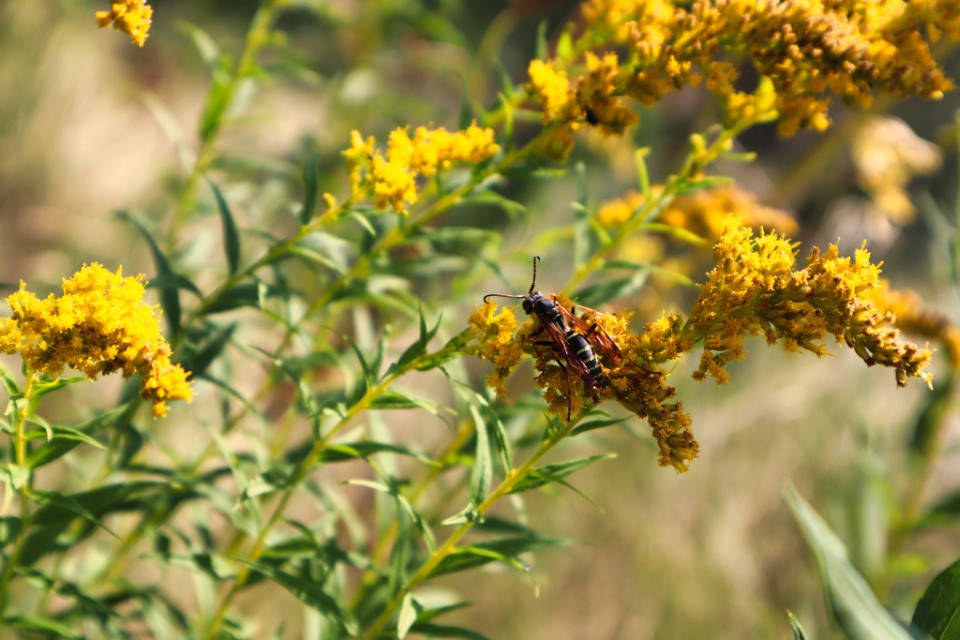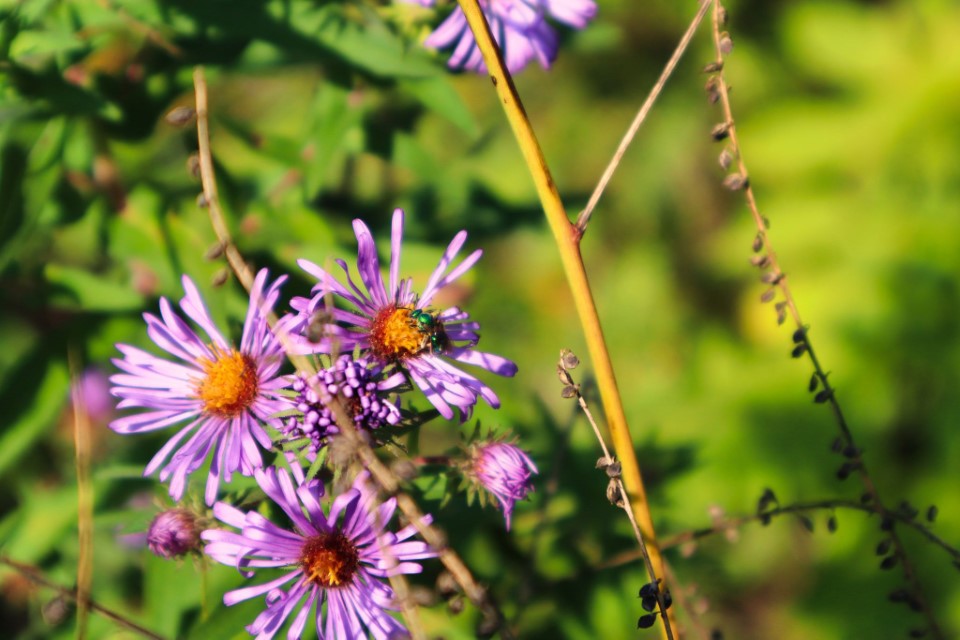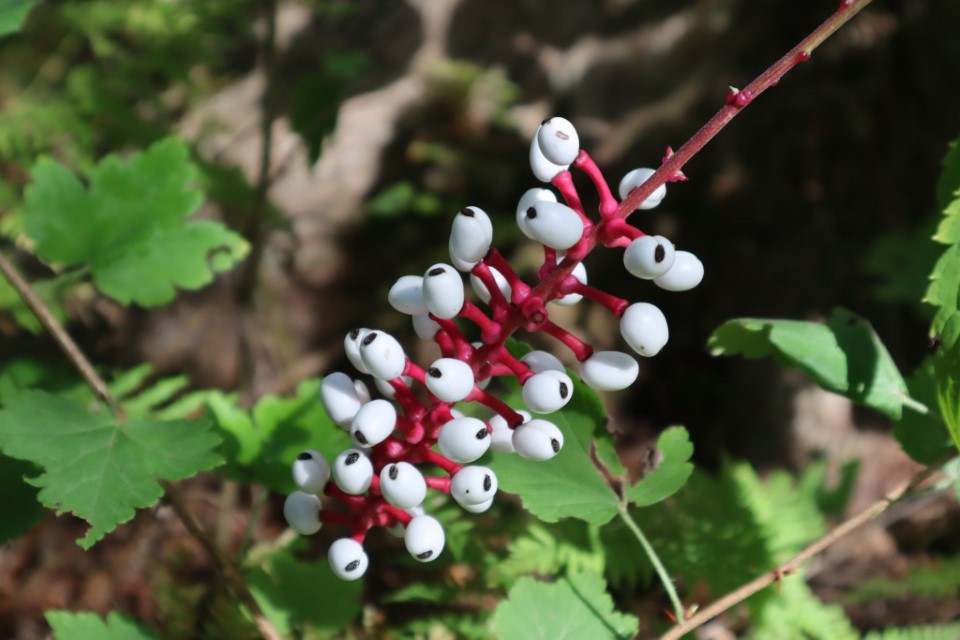(The Goulbourn Wetland Complex. All photos: Jessie Lozanski)
(Editor’s note: Jessie Lozanski brought us her ‘Wild Stittsville’ book and is now bringing the community the first of many articles that will be a monthly look at what’s happening with some of the species in Stittsville’s ecosystems. Follow along and use this as inspiration to get out in our natural community!)
Goldenrod and Asters:
Late summer to early fall is the time for goldenrods and asters. Both of these native wildflowers belong to the family Asteraceae and often grow together in wonderful tangles of purple and yellow. You can usually find goldenrods and asters blooming along forest edges, roadsides, and in meadows. Oftentimes goldenrod is mischaracterized as the cause of hay fever when the blame should be directed to ragweed, a plant that blooms at the same time with much lighter pollen that is distributed by wind rather than the heavy pollen of goldenrod that is distributed by insects. Goldenrod is actually an incredibly important part of our ecosystems as it hosts a massive variety of insects including many species specifically adapted to this wildflower. One of these species is the Goldenrod Gall Fly that deposits its eggs in goldenrod stems. Once the eggs have hatched, the saliva from the larvae mimics plant hormones and grows a ball-like growth along the stem. The larva then grows and hibernates in the gall until the following spring when it will pupate and emerge as a fly to start the cycle over again. Next time you are out for a walk take a look along goldenrod stems to see if you can find some galls. You might find some holes in the galls and these are where birds, especially downy woodpeckers and chickadees, have found a tasty larva treat. There are 14 different goldenrod species found in Ottawa and around 32 in Canada – the most common species found in Stittsville are Canada Goldenrod, Blue-stemmed Goldenrod and Zigzag Goldenrod.

Asters in Stittsville are one of fall’s most colourful wildflowers, often erupting in the deep purple of our most common species, New England Aster. Like goldenrods, asters are very important wildflowers for pollinators and if you look closely you are likely to find some type of insect, whether it be a fly, moth, butterfly, beetle, or bee amongst the petals. Also like goldenrod, asters are composed of hundreds to thousands of tiny flowers called florets clustered together in heads that resemble one large flower. The orange centre of asters are actually tiny disk flowers while the purple or white ‘petals’ are ray flowers.

Forest Species:
Our forests are saying goodbye to summer and this can be seen with the erupting White Baneberry berries amongst the leafy ferns. White Baneberry, also known as Doll’s Eyes from its striking white berries, is a common native plant found in our forests. The flowers of White Baneberry bloom in early summer while the berries develop late in the summer and early fall. These berries are poisonous to humans but some birds like ruffed grouse, a species found in Stittsville, will consume them.

Another fruiting species during early fall is the American Beech that produces spiky beechnuts. Beech trees are easily identified by their extremely smooth grey bark. You can often see claw marks left on the beech bark from black bears climbing up the trees to shake down nuts or chew on branches. We have some American Beech trees in Stittsville but the best place to see mature beeches is the South March Highlands Conservation Forest in Kanata.
Tips for Your Yard:
Soon leaves will be falling and you might feel inclined to rake them up into bags and put them out with your compost. Instead, this year you should leave the leaf litter in your yard. Falling leaves actually play an important part in many insect’s life cycles. For example, pictured below is a native Basswood Leafroller found in the forest behind Westridge. Basswood Leafrollers are a moth whose larvae roll themselves up in basswood leaves late in the season just before the leaves drop. Numerous leafrollers will pupate and overwinter in the leaves that have fallen to the ground. There are plenty of moth and butterfly species like the Basswood Leafroller and with just a short walk in the woods or a look around your yard you are likely to find more rolled up leaves with varying species snuggled inside. If you rake up your leaves then the poor larvae have little to no chance of survival.

Not raking your yard also has the added benefit of increasing organic matter and nutrient content to your soil in spring that will ultimately result in a healthier lawn. Many of the extra nutrients you add to your lawn via chemicals you buy at the store can be added for free by simply leaving your leaves.





One word Beautiful.
Thank you.